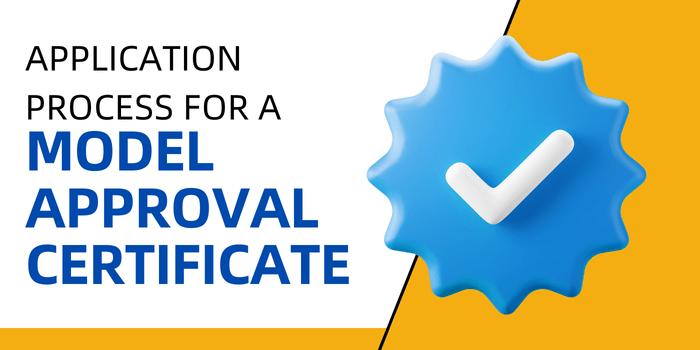How Do I Start the Application Process for a Model Approval Certificate?

Are you new in industry and not aware of about the model approval process then here comes the solution for you. By the application process for a model approval certificate in India you can simply apply this. This is mandatory to obtain if you are willing to manufacture or import weighing scale license.
1. Identify the Relevant Regulatory Authority
The first step in the application process is identifying the relevant regulatory authority in your region. Different countries have specific bodies responsible for issuing Model Approval Certificates. For example, in India, the Bureau of Indian Standards (BIS) handles such approvals, while in the United States, it may be the National Institute of Standards and Technology (NIST).
2. Gather Necessary Documentation
Prepare all the necessary documentation required for the application. This typically includes:
- Technical Specifications: Detailed descriptions of the product’s design, components, and functionalities.
- Operational Manuals: Instructions on how to operate the product.
- Calibration Procedures: Methods used to calibrate the product to ensure accuracy.
- Compliance Certificates: Any existing certificates proving compliance with relevant standards.
3. Complete the Application Form
Fill out the application form provided by the regulatory authority. Ensure that all the information is accurate and complete. Incomplete or incorrect applications can lead to delays or rejection.
4. Submit the Application
Submit the completed application form along with the required documentation to the regulatory authority. This can often be done online or via mail, depending on the specific authority’s process.
What Are the Steps Involved in the Model Approval Process?
1. Preliminary Review
Upon receiving your application, the regulatory authority will conduct a preliminary review to ensure all necessary documents are provided and the application is complete.
2. Technical Evaluation
The product model undergoes a technical evaluation where it is tested under various conditions to assess its performance, accuracy, and compliance with relevant standards. This may involve laboratory testing and real-world usage scenarios.
3. Compliance Verification
The regulatory authority verifies that the product complies with the specific technical standards and regulations. This step ensures the product meets all necessary safety, accuracy, and reliability criteria.
4. Issuance of Model Approval Certificate
If the product passes all evaluations and verifications, the regulatory authority issues the Model Approval Certificate. This certificate confirms that the product model meets all required standards and is approved for commercial use and distribution.
What Are the Common Challenges in Obtaining a Model Approval Certificate?
1. Technical Non-Compliance
One of the most common challenges is technical non-compliance, where the product does not meet specific regulatory standards. This can be due to design flaws, inaccurate measurements, or substandard components.
2. Incomplete Documentation
Incomplete or incorrect documentation can delay the approval process. It is essential to ensure that all required documents are accurate and complete before submission.
3. Testing Delays
The testing phase can sometimes face delays due to a high volume of applications or technical issues during evaluation. Manufacturers should be prepared for potential delays in the approval process.
4. Regulatory Changes
Changes in regulatory standards or requirements can also pose challenges. Manufacturers must stay updated with the latest regulations to ensure compliance.
How Long Does the Model Approval Process Take?
The duration of the model approval process can vary depending on the product, the complexity of the evaluation, and the regulatory authority. Typically, the process can take anywhere from a few weeks to several months. Manufacturers should plan accordingly and factor in potential delays.
Can I Reapply if My Application is Rejected?
Yes, if your application is rejected, you can reapply after addressing the issues identified during the evaluation. This may involve making necessary modifications to the product to meet the required standards and resubmitting the application with updated documentation.
How Much Does it Cost to Obtain a Model Approval Certificate?
The cost of obtaining a Model Approval Certificate can vary widely based on several factors, including:
- Regulatory Authority Fees: Different authorities have different fee structures.
- Testing Costs: Fees for laboratory testing and technical evaluations.
- Documentation Preparation: Costs associated with preparing and submitting the necessary documentation.
- Redesign and Modifications: If the product requires modifications to meet standards, this can add to the overall cost.
Manufacturers should budget for these expenses and consider them as part of the product development and approval process.
What is the Validity Period of a Model Approval Certificate?
The validity period of a Model Approval Certificate varies depending on the regulatory authority and the specific product. Typically, certificates are valid for a period ranging from one to five years. Manufacturers must renew the certificate before its expiration to continue legally selling the product.
How Can I Stay Updated with Regulatory Changes?
Staying updated with regulatory changes is crucial for maintaining compliance and ensuring the continued validity of the Model Approval Certificate. Manufacturers can:
- Subscribe to Regulatory Newsletters: Many regulatory bodies offer newsletters and updates.
- Join Industry Associations: Industry associations often provide updates and guidance on regulatory changes.
- Regularly Check Regulatory Websites: Periodically check the official websites of relevant regulatory authorities for updates and announcements.
Conclusion
Applying for a Model Approval Certificate is a detailed and essential process for manufacturers of electronic weighing scales and other regulated products. By following the steps outlined in this guide and addressing common questions, manufacturers can navigate the application process more effectively. Ensuring compliance with regulatory standards not only facilitates market access but also builds consumer trust and promotes fair trade practices. Stay informed, prepared, and diligent throughout the application process to achieve successful model approval.